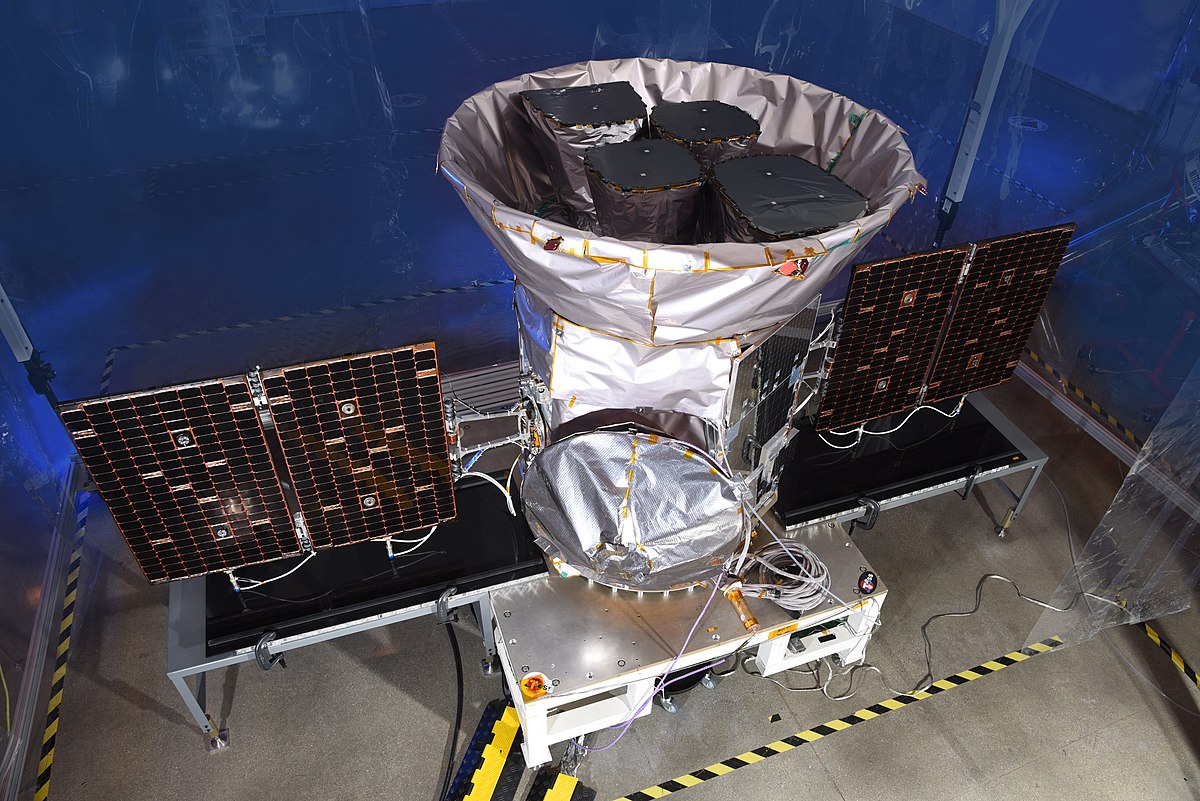 An artist’s impression of TOI 700 d, another Earth-sized planet discovered by NASA. It is depicted here as an ocean planet but its actual appearance is unknown. It is located in the same planetary system as the newly discovered TOI 700 e. Credit: NASA’s Goddard Space Flight Center / Public domain / Wikimedia Commons
An artist’s impression of TOI 700 d, another Earth-sized planet discovered by NASA. It is depicted here as an ocean planet but its actual appearance is unknown. It is located in the same planetary system as the newly discovered TOI 700 e. Credit: NASA’s Goddard Space Flight Center / Public domain / Wikimedia CommonsScientists at NASA have discovered an Earth-sized planet orbiting within the habitable zone of its star. The planet was discovered in the TOI 700 planetary system and has been dubbed TOI 700 e by NASA.
The newly discovered world is approximately 101.4 lightyears away from Earth. The discovery is significant because liquid water could exist on the planetary surface of TOI 700 d.
The planet is about 95 percent of the Earth’s size and is probably rocky. At least four other planets orbit the star in the TOI 700 planetary system, named a, b, c, and d by NASA.
Discovery of an Earth-sized planet
TOI 700 e was discovered using data provided by NASA’s Transiting Exoplanet Survey Satellite (TESS). The satellite is used to monitor large sections of the sky, dubbed sectors, for about 27 days of the year.
Scientists at NASA can spot planets using TESS by observing changes in stellar brightness, which are caused when a planet crosses in front of a star from our perspective on Earth.
In 2018, TESS began monitoring the southern sky before changing focus to the northern sky. In 2020, monitoring of the southern sky resumed. The scientists were able to compare data and revise initial calculations made about the size of the TOI 700 planets. They are now believed to be about 10 percent smaller than initially thought.
TOI 700 e is an interesting discovery because the earth-sized planet is orbiting within the habitable zone of its star. This habitable zone is defined as a range of distances where it is possible for liquid surface water to exist on a planet. This means that water could exist or might have existed in the past on TOI 700 e.
TOI 700 e may be tidally locked, which means one side of the planet would receive constant light and the other perpetual darkness. The difference in temperature on both sides could cause hurricane-force wins to rage across the planet.
 The TESS satellite that discovered TOI 700 e. Credit: Orbital ATK / NASA / Public Domain / Wikimedia Commons
The TESS satellite that discovered TOI 700 e. Credit: Orbital ATK / NASA / Public Domain / Wikimedia CommonsThe TOI 700 planetary system
The newly discovered planet orbits a small and cool red dwarf star. TOI 700, which gives its name to the system, is a spectral class M of red dwarf, which is much redder, cooler, and dimmer than the sun in our own Solar System.
Another planet discovered in the system was also found to be within the habitable zone of the red dwarf star. TOI 700 d was also found by TESS and it has been suggested that the planet could contain water on its surface and maintain a planetary atmosphere.
 Map of the TOI 700 planetary system where two earth-sized planets have been found in the habitable zone. Credit: NASA’s Goddard Space Flight Center / Public Domain / Wikimedia Commons
Map of the TOI 700 planetary system where two earth-sized planets have been found in the habitable zone. Credit: NASA’s Goddard Space Flight Center / Public Domain / Wikimedia CommonsWhat scientists are saying
“This is one of only a few systems with multiple, small, habitable-zone planets that we know of,” said Emily Gilbert, who led the research and is a postdoctoral fellow at NASA’s Jet Propulsion Laboratory in Southern California.
“That makes the TOI 700 system an exciting prospect for additional follow up. Planet e is about 10% smaller than planet d, so the system also shows how additional TESS observations help us find smaller and smaller worlds,” Gilbert continued
Allison Youngblood, a research astrophysicist and the TESS deputy project scientist at Goddard is optimistic about future discoveries by TESS and in the TOI 700 system. “We’re looking forward to the other exciting discoveries hidden in the mission’s treasure trove of data,” she said.

 1 year ago
202
1 year ago
202











 English (US)
English (US)